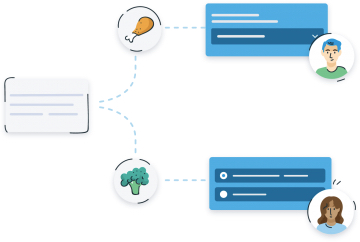As the saying goes, it’s strike while the iron is hot. But what does that mean in survey terms? As you prepare to implement or step up your survey strategy, it’s critical to understand the circumstances under which a survey is most likely to be beneficial—as well as the circumstances under which it isn’t.
You can and should use surveys to uncover issues and opportunities in your business from both new, existing, and exiting users. So what is it you want to find out? That’s the starting place for all surveys.
Begin by considering the aim of your survey, since what you’re asking determines both when and how you ask it (more on the How in Chapter 5). In addition to a handful of opportunities you likely already have in mind, we’ve presented a few ideas below to help inspire you on your path to building a survey routine that improves your understanding of your customer and ultimately the performance of your business.
Here are some situations in which implementing user surveys can be beneficial:
- You want to know how satisfied your customers are.
- You want to know what convinced visitors to purchase and what pushed them to cancel or leave.
- You want to know what website visitors are looking for when they arrive.
- You want to know if there is a market for your product.
- You want to identify points of confusion in your conversion funnel.
- You want to know how they found you.
- You want to understand how they describe the product to friends.
- You are looking for feedback for a product already on the market.
- You want to find out what keywords visitors are using to find your site via search.
- You want to know how users feel about a change your business recently made.
- You want to identify the features that are most desired by your existing customers.
- You want to know more about your best or worst customers.
- You want to figure out how many users are experiencing a particular issue.
- You are trying to make sense of the inexplicable ways some users on your site are behaving (especially if it’s a specific group).
- You want to understand why visitors are leaving your website.
and the list goes on. There’s nothing stopping you from doing all of the above and more. The key is prioritization. Start small and focus on the survey opportunity that has the biggest potential for improving your site’s performance.
In order to determine where to begin, do the following:
- Look at the metrics that matter most to your business. Are there data points that could use some benefit from some clarification through qualitative feedback? These are ideal opportunities to uncover deeper insights through surveying. An ecommerce business, for example, might choose to begin gathering feedback from users who abandon their shopping carts.
- Brainstorm the answers that your team wants to know about your customers and business. Then come up with the questions that can help elicit these answers. Prioritize these questions and identify the best ways to ask them to uncover the insights that matter most to your business. That same ecommerce store might come up with questions such as, “Is there anything preventing you from completing your purchase right now?” and “What would convince you to buy from us today?”
In Chapter 9, we’ll discuss ways to encourage survey participation at length, but know that in general customers are happy to provide feedback as long as you follow some simple guidelines: don’t ask too much, too soon, or too often, and limit yourself to asking for need-to-know—rather that nice-to-know—information. Otherwise, you risk overwhelming users and causing them to abandon your survey to avoid the hassle, which defeats the purpose entirely.
Just like you wouldn’t reach for a screwdriver when you wanted to hammer nails into the wall, there are some cases when a survey simply isn’t the right tool. For instance, you should not use a survey if…
- You want to measure quantitative user behavior—for example, what percentage of users are clicking on the reworded call-to-action versus the old one.
- You want to know the underlying motivation of a user. Users have no problem telling you what they’re looking for, but it’s harder for them to pinpoint—especially in survey format—why they’re looking for it. People tend to rationalize their decision making, which leads to fuzzy results.
- You want information about people’s habits and behavior—people are notoriously bad at self-reporting.
While all of these are reasonable goals, surveying is not the best way to achieve them. On the other hand, in situations that benefit from qualitative feedback user surveys are not only an appropriate tool, but the best one available.



